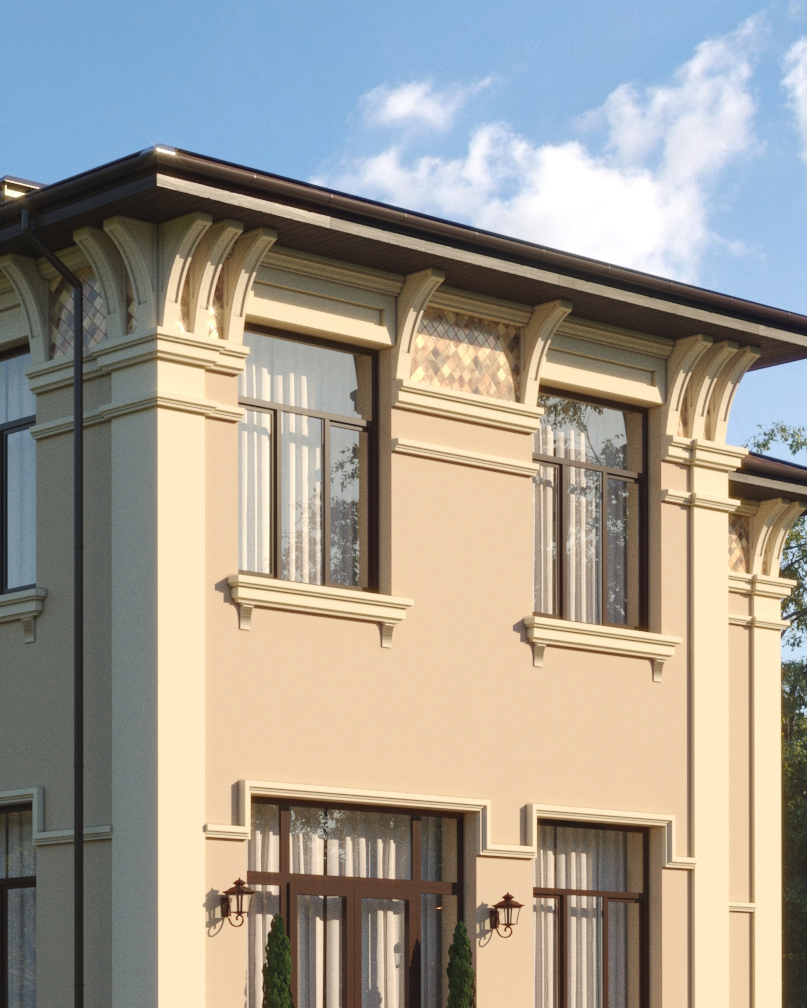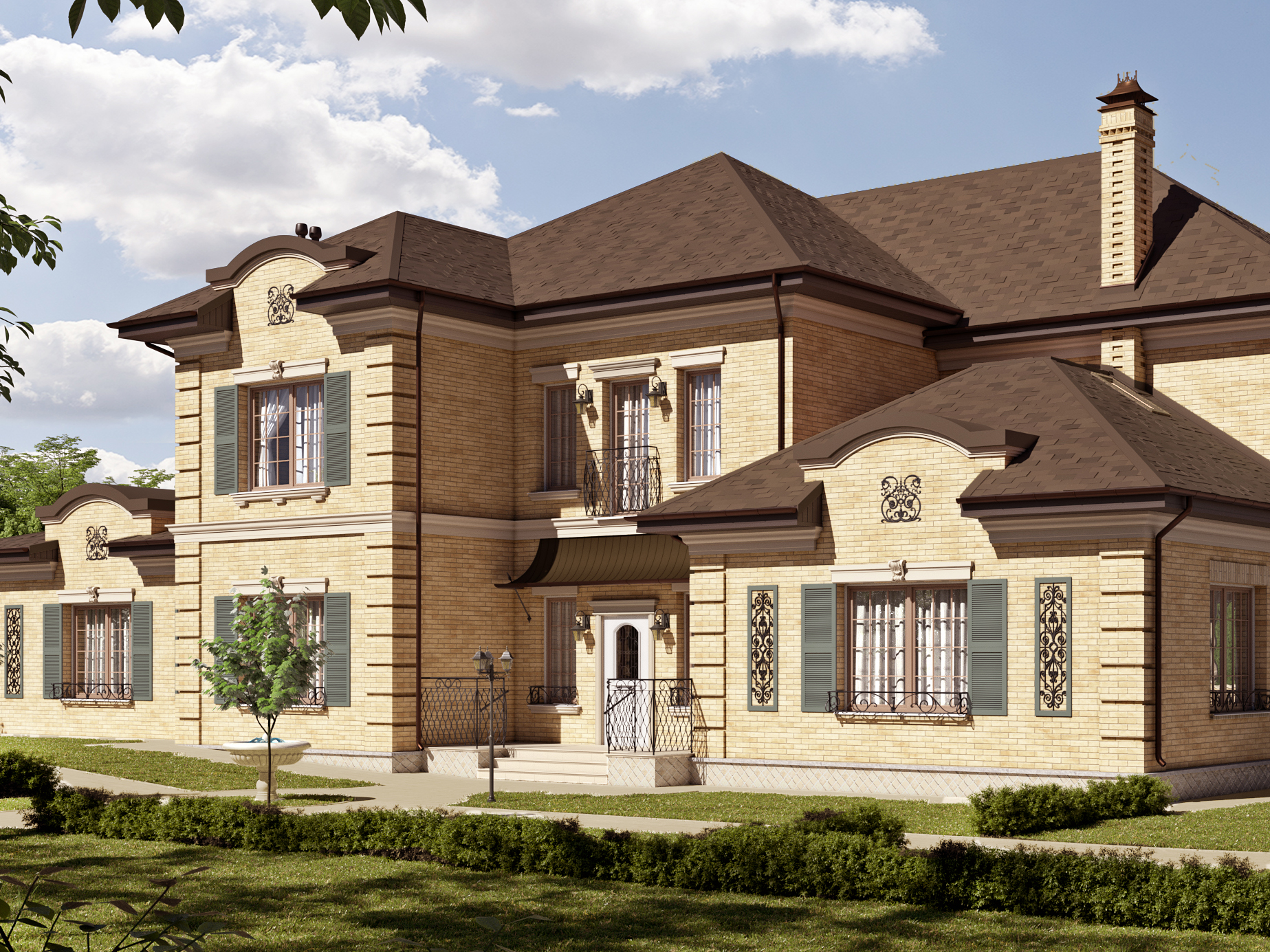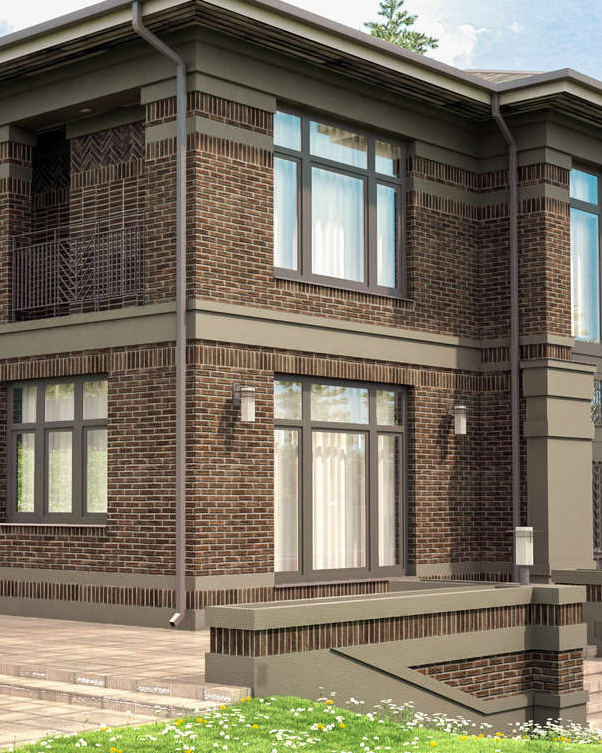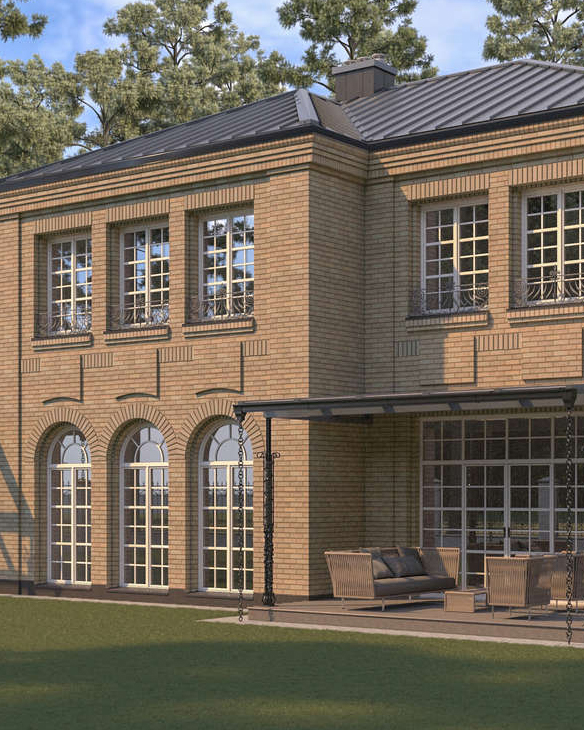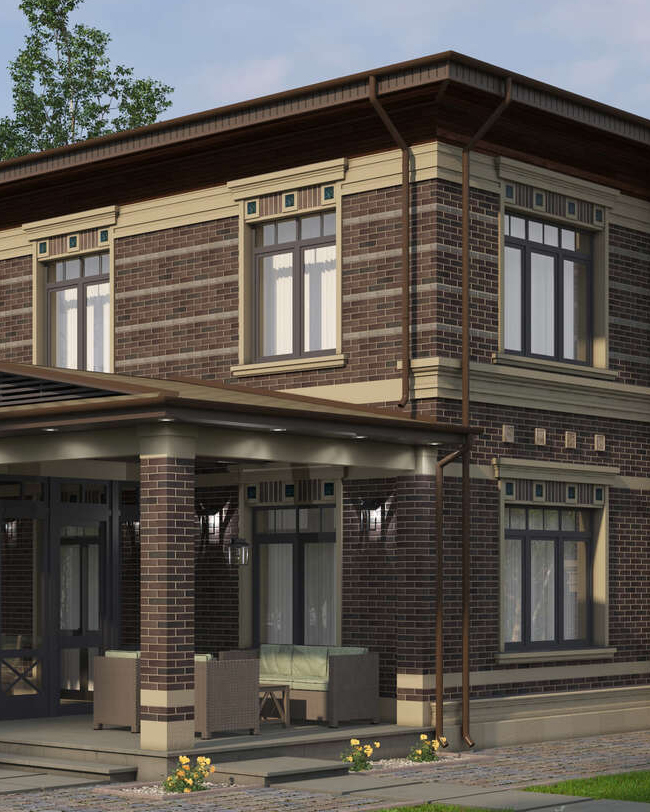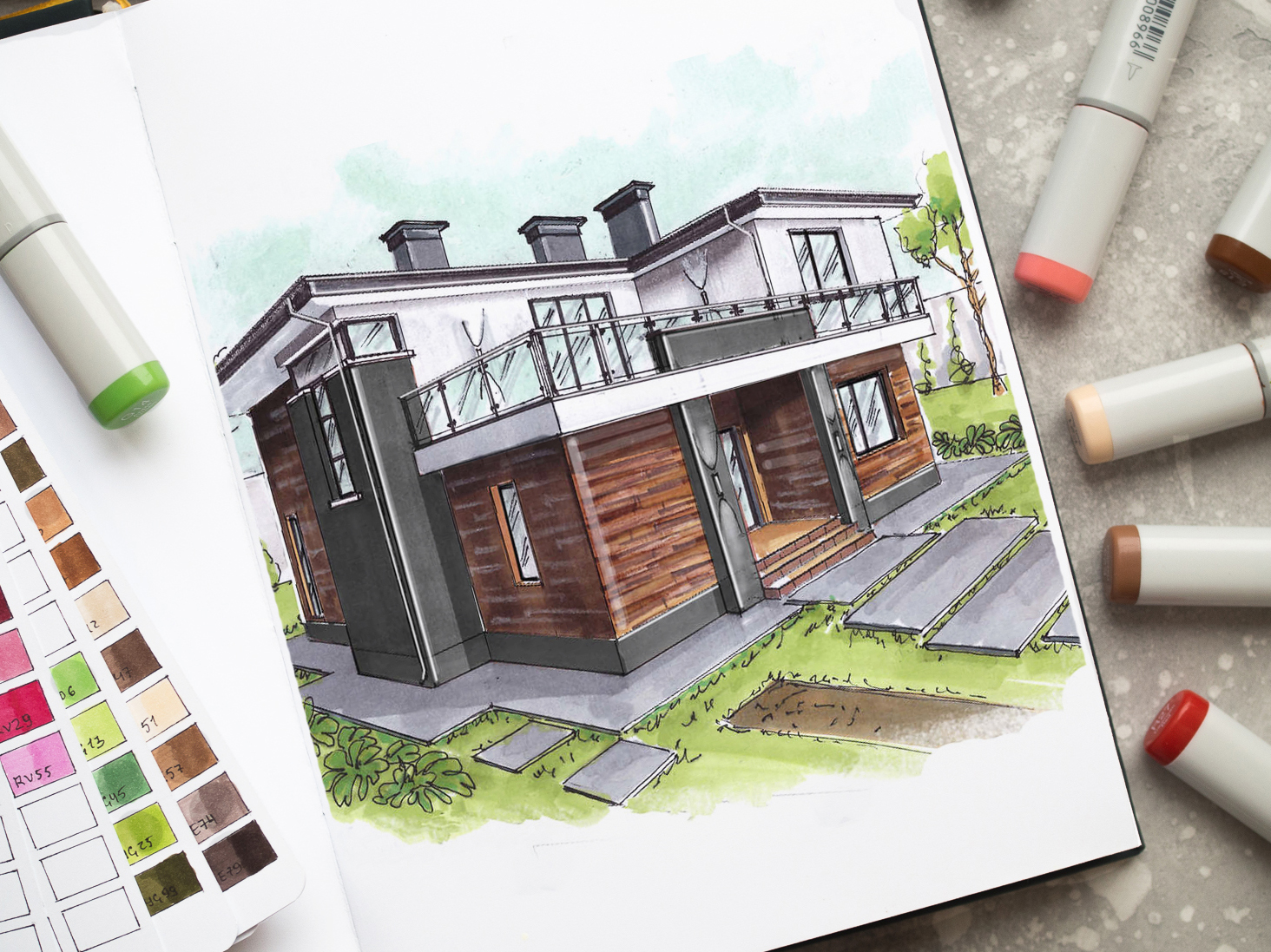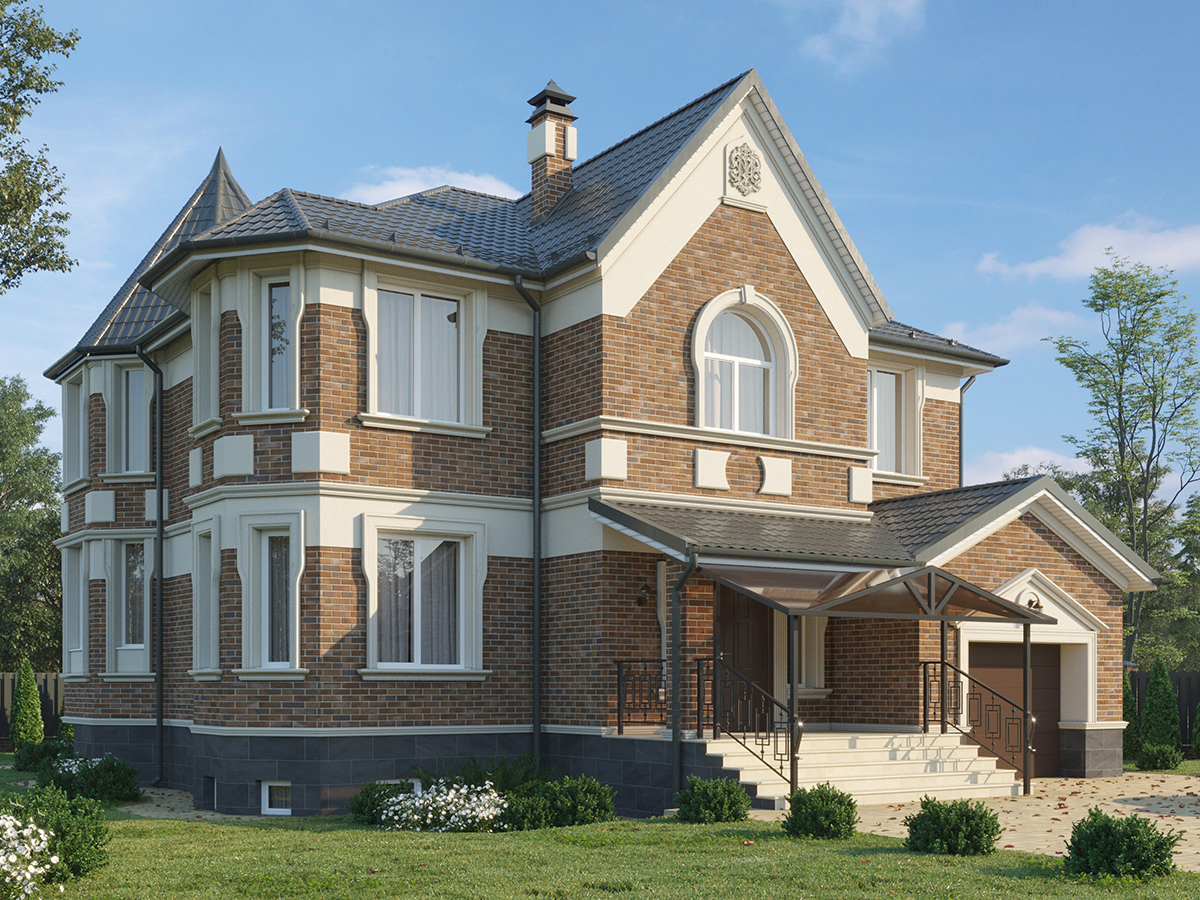
White extension
The red brick house in Bentveld, Holland, was built in 1932. Eighty years later, the Baksvanwengerden architectural bureau redesigned the concept. The dark and blank facade was transformed into an open sunny space.
The house looks like a hut as the first floor extension continues the line of the gabled roof. The walls and partitions have been removed as much as possible to unify the space, and the panoramic glazing makes it even larger.
Modern houses with pinches in our facade database.






